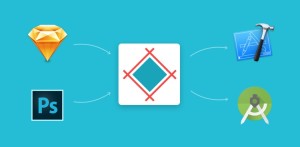This article was created in partnership with StudioWorks. Thank you for supporting the partners who make SitePoint possible.
Sure, you need a certain minimal viable level of design skill prowess if you want to have a successful career as a designer. But a lot more than that goes into it, too. Think about how many people you know who can cook amazing food but who would never last five minutes in a restaurant kitchen during the lunch rush.
It would be great if we could just sit down, design pretty things, and go home. Or better yet, just chill in our home studios, creating. Unfortunately or not, design is a business just like everything else, and that means you’re going to have to put time, effort, and sometimes money into cultivating the soft skills and business side of your design career.
This means managing your time well, marketing yourself, building a brand, experimenting, maybe launching a side business, and generally just putting your name and work out there for people to find.
These days, it’s not enough to have a portfolio. That’s just table stakes. You need to plan out your whole career — with the understanding that plans change.
Let’s look at some of the things you need to do to develop your career until you’re basically the next Jen Simmons or Jeffrey Zeldman.
Get Your Communication Skills Flowing
Communication skills come naturally to some, and not so naturally to others. In both cases, those skills are rather drastically affected by the people you have to communicate with most. Most of us find ways to convey our thoughts and intentions clearly to our friends, and also to people in our industry and hobby communities. We learn the lingo, we learn which topics encourage discussion, and which are best avoided.
Writing for anyone who’s not a part of your immediate community, and especially writing for people who don’t know what you know, is hard. Speaking to them in person can be harder, depending on how you, as a person, prefer to communicate. But, all the same, you have to.
Even if you work in an agency amongst other designers right now, there will inevitably come a time when you have to pitch clients on the benefits of your work, explain to a newbie the processes you use, or defend your decisions to developers who push back, or to other people who just don’t know what you know.
If there’s any single thing you take away from this article, focus on your communication skills. It will affect your career more than anything else on this list. If you’re looking for a place to start learning those skills, CopyBlogger always has you covered — at least for the writing side of it.
Branch Out into Side Businesses
Some side projects are great, strictly because they allow us to get out of our comfort zones, try new things and regain a sense of creative discovery.
Others may overlap with the activities you’d use to build a personal brand, which we’ll get into shortly, with the added benefit that they can bring in extra money while you’re establishing yourself as an expert in the field.
Here are some of the more popular ways of doing this.
1. Courses
Sure, you can throw some tutorials onto your blog, or onto YouTube, for free. And you probably should. But if you want to make a side business out of teaching others what you do, and further your career in the process, you’re going to need an actual product. This is where courses come in.
Quality video courses, which are quite popular these days, can be expensive and time-consuming to set up. It’s gotten easier, though, now that you can use all-in-one course development and delivery services like Kajabi. This platform can help you manage everything relating to your premium educational content and running the business around it.
You can create membership sites, host live events, create automation funnels, upsells, maintain a blog and manage contacts all in one place, so it’s not as hard as it used to be. However, you still have to get a half-decent camera, a half-decent microphone, and ideally learn some basic video editing skills.
This is a side hustle I’d frankly only recommend if you’ve got some time on your hands, and a bit of extra money for some beginner hardware. It can be quite rewarding, though, so don’t dismiss the idea out of hand.
2. Live Streaming
I mentioned live events in the last section, so I thought I’d mention streaming as its own thing. Streaming doesn’t have to be educational, although education is probably the best way to sell your expertise. You could just sit there and share designer memes on Twitch if you want.
The problem is mostly that the requirements for video and audio haven’t changed, and depending on how you set up your stream schedule, it can be even more demanding than making video courses.
Then again, if you don’t mind not making a lot of money, and want to do it for fun, it’s still a great way to “meet” new people, and to be seen.
3. Paid Newsletters
Now this is an option I’d save for when you’ve already built a bit of an audience by other means, such as social media and/or blogging. But Substack has made it easier than ever for people to pay writers directly.
If you’ve got wisdom to share, and if you think people would be willing to pay to have that wisdom beamed straight into their inboxes, go on and have at it.
4. Make Stuff for Other Designers
Plenty of designers and agencies have kept up a healthy “passive” revenue stream by making resources for other designers.
Be it a template, a WordPress theme, a Sketch UI kit, an icon font, or whatever else, if it’s valuable to you because it solves problems that you have, then there’s a good chance your peers will be willing to pay for it. Just don’t forget to also give stuff away once in a while. Gratitude goes a long way in the design world.
Master Time and Project Management
When just starting out, designers often take any and all work that comes their way, and just cram it into their schedules as best they can.
Sometimes you have to do this, because food. In the long term, however, it’s not a sustainable strategy. That way lies burnout, and work you’re not going to be proud of later on.
Now, time management is something that everyone has to approach differently, because not one of us is wired the same way. But there are some basic principles to follow:
- Give yourself generous deadlines for “wiggle room,” because something is going to go wrong, and you want to have the time to deal with it.
- Don’t dive straight from one big project into another, if you can help it. Take a day, or at least a few hours, off in between gigs.
- Budget a fair bit of time just for thinking and planning. Plan every step of the process that you can reasonably foresee. A solid plan makes the rest of the work go a lot faster.
Managing your time right isn’t just good for your mental health, of course. It makes clients happy, too, and I really don’t think I need to explain how that’s good for your career.
Develop Your Personal Brand
Of course, communicating with clients and budgeting your time right will only take you so far, because you kinda need to have clients in the first place. This is where developing a brand comes in: people need to know who you are, and they need a reason to choose you over all the other designers out there. You need a “hook,” which is where your niche specialty and your distinct perspective on things really come into play.
Again, having a good portfolio isn’t enough on its own — not even if you’ve selected the best typefaces and created an amazing logo for your personal website. Search engine optimization is all well and good, but you need to be where people will see you, and you need to stand for something.
You can get started exploring personal brand development in the following spaces.
1. Social Media
Getting active on the top social networks is probably the first step in this process. Like, comment, and just generally contribute to the conversation. Do not — and I repeat, do not, under any circumstances — spam people with links to your site or services.
Show off things you’ve made or written, yes. Be proud of your work. Show off (and this is important) your personality and work process, so people can see how you do things.
2. Blogging
Speaking of writing things, blogging is still one of the best options for putting your name and ideas out there. It’s also a medium that allows for a lot of personality to show through, so go wild.
Like social media, blogging allows you to show off a bit, and contribute to the ongoing conversation in the design community, but it also allows for a lot more depth and nuance.
3. Public Speaking
Getting up on stage is another option. Now, this might conjure images of speaking at design conferences, and that’s certainly not a bad thing to do. It’s a great resume-building experience, and a good addition to your brand. But I’d actually start with smaller, local business conferences.
Get out there and preach the good word of design, user experience and accessibility. Teach other businesses why they should be looking very closely at these concepts. It’s a good way to network, get new potential clients, and practice communicating with non-designers.
You Don’t Have to Do It All at Once
Now, of everything listed in this article, your communication skills and time management skills are the most essential to getting your career to take off. You know, after knowing how to design. Everything else you might do to further your ambitions will have to be rooted in those core skills.
As for the rest — the self-marketing and the side hustles — take it slow. No one has the time to do all of that stuff, and design pretty things. Start with something simple, like getting your social media presence going, then branch out into more complex side projects and businesses. Not counting the fickle nature of the universe, your career will go where you take it, so don’t blindly rush into these decisions.
And most of all, have some fun doing it.
 Gal Shachar
Gal ShacharGal Shachar is a designer based in Tel Aviv who specializes in digital UX, ad media and branding. He has been active in the industry since 2017, following his studies at Ruppin College. Since then, Gal has been working with many well-known brands and businesses on web design, logo creation, user experience and branding campaigns. You can visit his website here.








